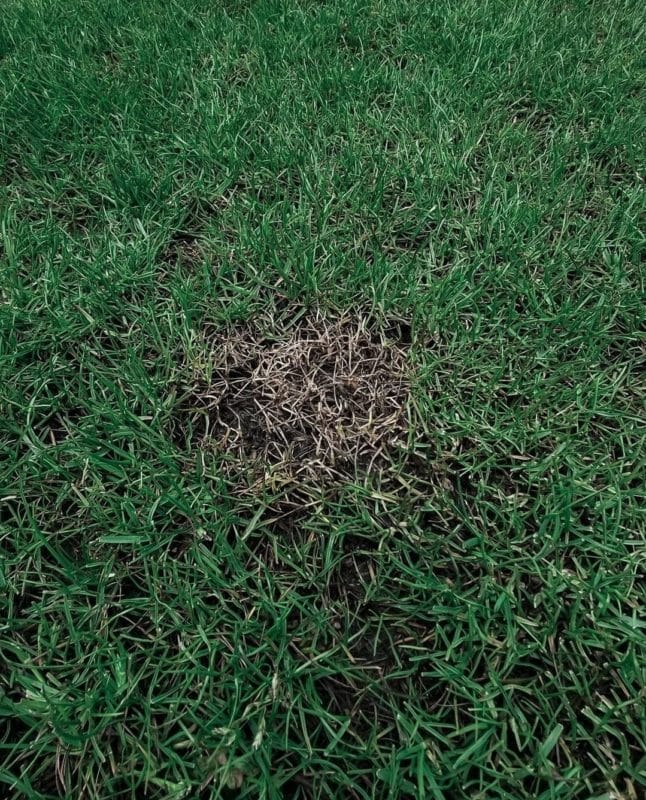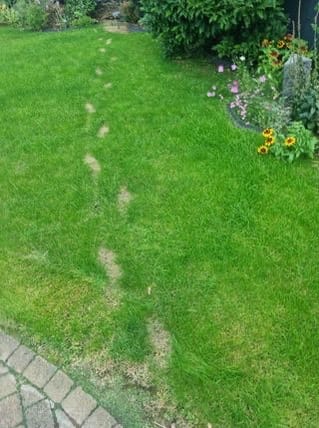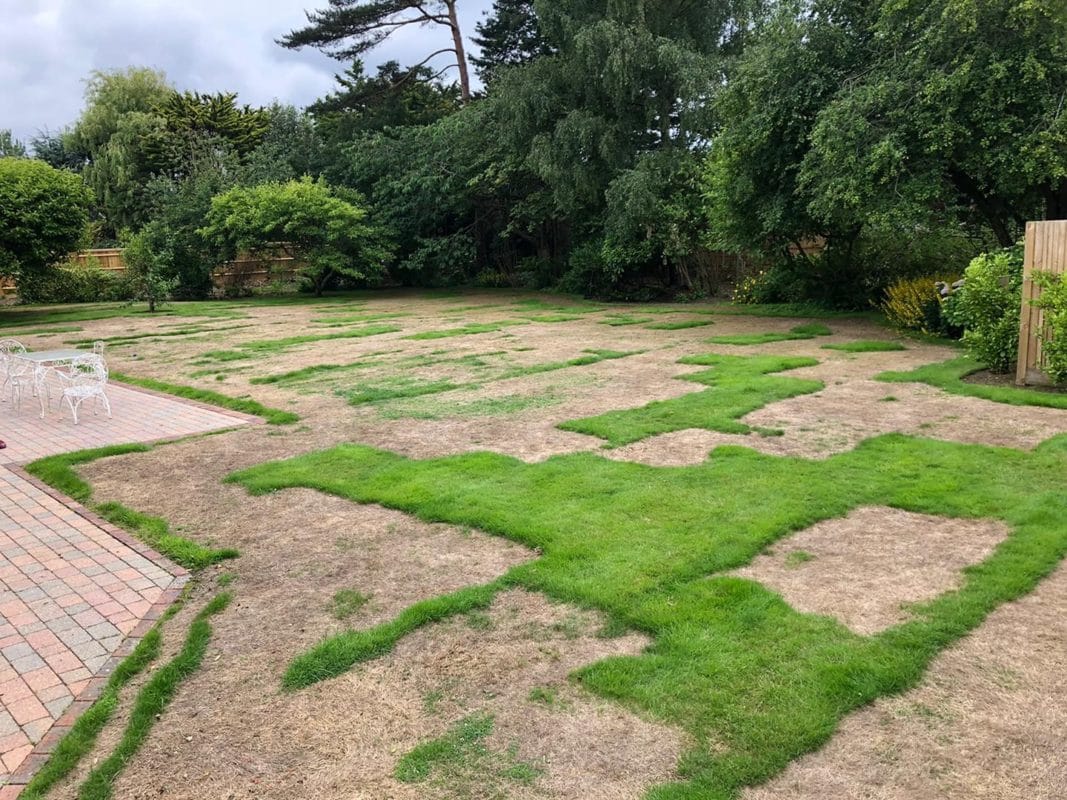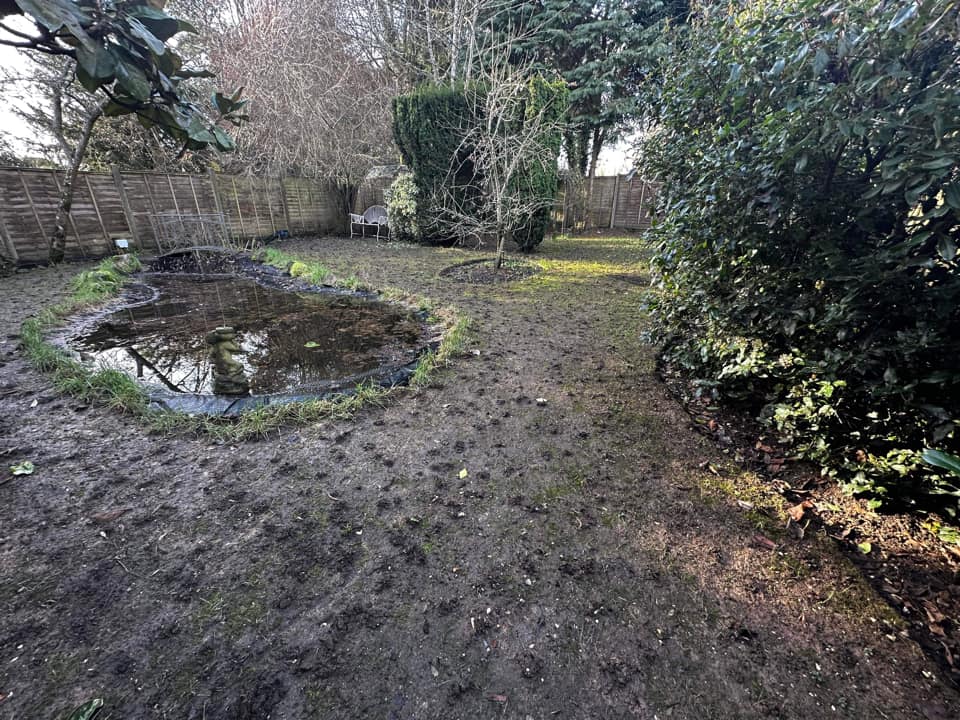It’s easy to damage your lawn by making rookie mistakes. Here are some common lawn errors to avoid.
Lawns are living things which means that they won’t always behave the way you’d like them too. But Not all lawn disasters are down to Mother Nature, human error can sometimes take the blame. Here are some common lawn errors to avoid.
- Chemical or petrol spillages
- Mistakes with herbicides
- Scalping
- Brown footprints after a frost
- Damage from fallen leaves
- Inaccurate fertiliser spreading
- Unsightly patches made by toys or furniture
When you’ve been working in the lawn care industry as long as I have, you’ll have seen all manner of methods that people have found to damage their lawns. Some are purely accidental, but some lawn errors can definitely be avoided just by taking your time, thinking about what you’re doing and planning ahead. Let’s take a look.
Spillages

We’ve all done it, gone to fill the mower with petrol and slopped some over the side. Or spilt some weedkiller whilst adding it to the sprayer. Heck, probably the most common mistake I’ve ever seen is folks missing the fertiliser spreader and spilling nitrogen fertiliser directly onto the lawn.
The trouble with spillages is that plants don’t always react well to concentrated doses of foreign substances. The affected area of the lawn will turns all shades of any colour but green. And in some cases the grass will be completely killed, leaving you with ugly bare patches. You may even need to dig out the affected area and replace it with new soil and seeds.
To avoid lawn errors like this, get yourself in the habit of always doing messy jobs well away from the lawn. Be careful with sprays and fertilisers on patios too – they can damage or stain the surface. Instead, work inside a shed or a garage where there’s good light and where any spillages can easily be contained and cleaned up.
Mistakes With Herbicides
Farmers, landscapers, greenskeepers and professional lawn care folks all have to adhere to strict regulations when it comes to handling and applying herbicides. I shall never understand why the same rules don’t apply to domestic gardeners but that’s beside the point.
If you plan to use a weedkiller on your lawn, you need to take precautions. I don’t need to spell out what could happen. There can be nothing more soul destroying than going to kill dandelions and wiping out your whole lawn instead.
- Make sure you know what the chemical treats. Unless you are deliberately killing off your lawn to replace it, avoid things like glyphosate or all purpose weed killers. Choose a selective herbicide that treats the weeds you want to get rid of.
- Follow all instructions TO THE LETTER. Don’t go thinking that a more concentrated dose of herbicide will do a better job, or that a weaker dose will save you money. Use the recommended rate of application.
- Clean your sprayer thoroughly after every use and again before you mix up a fresh batch of chemical. I have two sprayers. One is only for lawn treatments, the other is only for herbicides. That way I’m less likely to get any cross contamination.
- Double check the calibration on your sprayer before you start out. If it’s been a while since you used it, or if it’s a new piece of equipment, familiarise yourself with the instructions.
- Protect yourself as well as your lawn. Gloves, goggles, long trousers and strong boots are essential.
- Don’t spray on a windy day – the breeze can carry fine droplets of chemical for quite a long way. Your after killing the daisies – not your prize dahlias!
- If in doubt, get some training or call in the professionals.


Don’t Mow Too Low
A lawn that’s been scalped is a sorry sight indeed. In most cases the grass will recover in a few weeks but in the meantime, you will have opened up the sward and created an opportunity for weeds to establish themselves.
Check your mower before you switch it on. Are the blades at the correct setting for your lawn? Remember the one third rule – never reduce the length of your grass by more than 30% in one day.
Another reason for scalping is an uneven lawn surface. Lumps and bumps can catch on the bottom of the mower causing the blades to cut too close to the soil. Firstly, this is a very fast way to blunt your mower blades. Secondly, it’s not good for the grass. Watch my video on levelling a bumpy lawn and take action. Don’t let scalping become one of your lawn errors.
Frosty Footprints
Do you have a line of roughly oval shaped brown patches in your lawn? The chances are somebody has walked across the grass when it was frozen. It’s one of the most common lawn errors there is. Don’t do it – and train the family not to do it either. If there’s something you need from the shed and you can only get to it by walking on the lawn, it’s time to build a proper path or pop some stepping stones in the lawn.
Autumn Leaves Spell Death To Lawns
It’s nature’s way. Come autumn, many trees and plants will shed their leaves. The leaves will fall to the ground where earthworms and mini beasts slowly return them to the soil. That’s all great in a wild situation, but if you are trying to cultivate a lovely lawn, a thick carpet of leaves will starve the grass plants of daylight at a time of year they need it the most.
Picking up leaves is a pain but it’s entirely necessary. Running over the lawn every couple of days with the grass box on may help to pick most of the leaves up. And then, of course, you can pop them into bags and turn them into leaf mould for mulching the garden.
If you have a lot of trees around your garden, I heartily recommend you invest in a cordless leaf blower. I’ve certainly got my moneys worth out of mine.

When Fertiliser Spreading Goes Wrong
Lawn feed is powerful stuff. And there’s no better way to see how powerful it is than getting an uneven spread of it on your lawn. If you are among the thousands of people who like to ‘broadcast’ their lawn feed, you’ll know what I mean.
Having a big bucketful of granular feed and using your gloved hand to throw it all over the lawn as though you were feeding the chickens, is a huge no-no. There’s no way you can get even distribution and as a result, within a few days of doing the deed, your lawn will look like a marble cake. All swirls of different colours. There’’ll be pale green swooshes where the grass has had no feed, dark green areas where it’s had a decent amount of feed and scorched straw coloured patches where it’s had too much. Invest in a proper spreader and learn how to calibrate it properly.
If you’ve used a spreader and made a mistake either with the calibration of the distance between “rounds” you will probably see light green and dark green stripes in your lawn. My tip is to step out the width of your spreader’s coverage and put markers at either end of the lawn. As you walk, keep looking at the marker. It’ll help you stay in a straight line and hopefully avoid those tell tale stripes.
Furniture Marks
Your lawn should be enjoyed to the max. After all the work you put into it, it’s a shame to keep it as a showpiece that can never be sat on. BUT after you’ve finished with your picnic rug, paddling pool, deckchair and drinks table – take them off the lawn. Every blade of grass that is starved of sunlight for more than 48 hours will start to turn an insipid yellow colour. Within a week, areas of your lawn will be so badly damaged that you’ll need to overseed them. Trust me, it’s quicker to fold the rug up and put it away than it is to scarify, top dress and establish seed.
What lawn care mistakes have you made and learned from in the past? Head on over to the Premier Lawns community and join in the discussion.
Read my 10 commandments of lawn care here.

